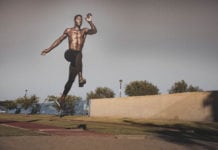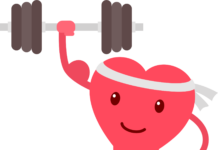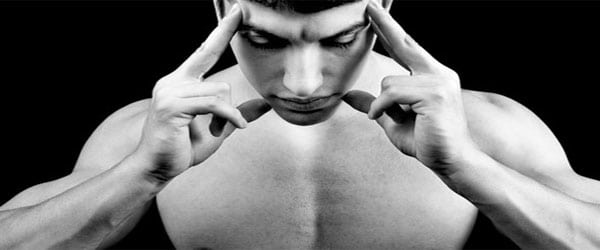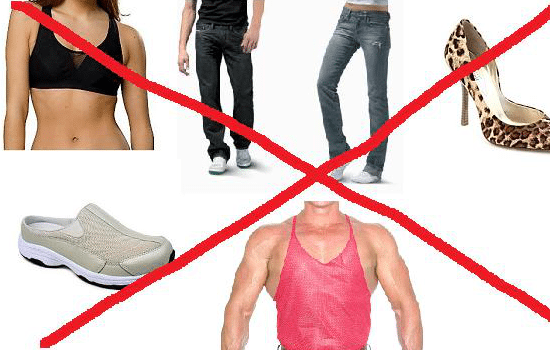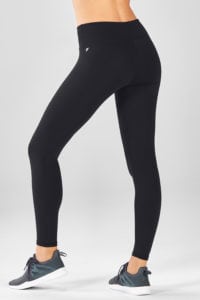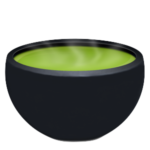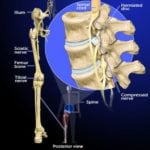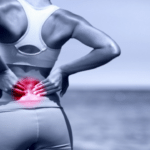You know when people say “dress for success”? Yeah, that’s not just about the office. What you wear to the gym 100 percent affects your performance.
That 10-year-old sports bra, or cotton T you’ve had since middle school, can actually make working out feel harder, and even wreak havoc on your body. Here’s what you should chuck from your workout wardrobe, stat:
1. 100% Cotton Clothes
Sure, research shows that cotton clothes stink less than synthetic fabrics, but “cotton literally absorbs every ounce of sweat, which makes you you feel like you’re wearing a wet towel,” says Chad Moeller, a certified personal trainer.
The more moist clothing is, the more likely bacteria will grow—especially if you’re wearing it for long periods of time, says Navya Mysore, M.D., a physician at One Medical in New York. And “if any open areas of skin are exposed to bacteria-filled workout clothes, it can lead to a fungal infection at the site,” she explains. Instead of cotton, opt for sweat-wicking fabrics made for exercise.
2. Worn-Out Sneakers
There’s a general rule of thumb that you should wear your sneakers for about 300 miles before replacing them. But if you’re not tracking miles, it can be tough to figure out just how much work you’ve put your gym shoes through.
“You know your sneakers are too old when the treads or designs on the bottom start to wear out,” says Jasmine Marcus, a physical therapist in Ithaca, NY.
“If the bottoms are flattening in areas and you can no longer see the design of the tread”—not to mention, if there are holes by the toes, or any other obvious signs of total disrepair—“it’s time to get new sneakers.”
The problem with old shoes? They provide less cushioning and shock absorption, says Marcus, and as the bottoms get worn down, it can throw off the alignment of your feet and, as a result, your knees and hips.
3. Regular Bras or Stretched-Out Sports Bras
For the love of your breasts, do not wear a regular bra to the gym. Saggy old sports bras with stretched-out elastic are a bad idea, too. “If you’re not wearing a sufficiently supportive bra to work out, bounce isn’t the only thing you have to worry about,” says Darria Long Gillespie, M.D., a clinical assistant professor at the University of Tennessee School of Medicine. “If you have a moderate to large chest, the movement can lead to upper back and shoulder pain post-workout.
Not to mention, “it can cause the breast tissue to stretch, damaging it and increasing your chances for sagging in the future,” says Gillespie.
4. Jewelry
If you’re too nervous to leave your jewelry in the locker room, leave it at home—it’s a no-go on the gym floor. Let’s start with necklaces: “If you’re running with a long pendant, I hope you enjoy it beating against your chest and smacking you in the face, or getting tangled with your earbuds or the elliptical arms,” says Angel Stone, a NASM-certified personal trainer.
And you might think rings are fine, but “wearing them while you lift could affect your grip on the weights and pose a serious risk if the weight slips out of your hand,” she says. “Also, the pressure of a weight against your ring can cause deep indentations and even break the skin. And remember, a 25-pound weight can easily dent the metal or scratch the stone.”
5. Too-Tight Clothes
Compression clothing, which is designed to allow movement while compressing the muscles, is fine. But clothing that’s a size too small or too tight in any way? That can do more harm than good.
“Clothing should not be so tight that it restricts movement—like shorts or leggings that make it impossible for you to bend over or descend into a full squat or shirts that keep you from raising the arms overhead,” says Robert Herst, a certified personal trainer and powerlifter.
“Also, clothing should not be so tight that it restricts circulation.” Too-small pants can cause leg cramps, while tight sports bras can actually constrict your breathing, says Mysore. Restrictive shorts can cause chafing on the inner thighs, which can even lead to infection.
6. Super-Baggy Clothes
“You don’t want to hide the body, because your trainer or instructor needs to see it to asses you,” says Conni Ponturo, the founder of Absolute Pilates Upstairs in Woodland Hills, CA. “Is the spine elongated, are the abdominals engaged, are the ribs poking out, are you overworking the wrong muscles?”
She adds: “Exercise clothes today are made to help the body move in a better way,” so find an outfit that actually fits you, and that you feel awesome in—looking good is just a bonus.
7. A Face Full of Makeup
This should really go without saying, but “makeup has its time and place, and the gym is not one of them,” says Joshua Zeichner, M.D., director of cosmetic and clinical research in dermatology at Mount Sinai Hospital in New York City. “When you sweat, dirt and oil can build up under makeup, which leads to irritation, and promotes acne breakouts.”
And so begins a vicious cycle, in which you wear more makeup to cover up the blemishes caused by wearing makeup. Ugh. “If your goal is actually work out at the gym, it’s best to go with a freshly washed face wearing nothing besides a light sunscreen,” says Zeichner.


